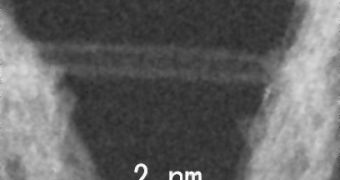There is undoubtedly a large variety of applications that nanotubes could fulfill, if only they were practical to produce in large masses. From space elevators to nanoscale, 3D computer processors, and from electrical transmission lines to new drugs, the nanotubes are clearly the way of the future. However, at the end of 2008, these applications seemed decades away. Now, thanks to the advancements made by researchers around the world, these goals have been brought closer than ever, with some saying that a part of them will become reality within two decades at the most.
One of the groundbreaking discoveries made this year came from the Rice University. Experts there managed to create a new method of producing carbon nanotubes (CNT) hundreds of meters long. Their approach relies on spinning acid solutions of nanotubes into fibers, and this appears to be working very well. This line of investigations was begun by late RU expert, Professor Richard Smalley, the winner of the 1996 Nobel Prize in Chemistry.
The Unidym company, for example, managed to demonstrate transparent electrodes from carbon nanotubes, and its innovation has already been put to use by companies such as Samsung. New computer displays have been made possible using the electrodes, and more advancements could very well be on the way. Display electrodes are currently made of some very brittle materials, which could soon be replaced completely by the Unidym products.
Another important breakthrough was made by scientists at the Stanford University, who recently demonstrated that 3D carbon circuits were possible. The announcements were made at the International Electron Devices Meeting, which was held earlier this month. According to experts, the circuits are still at the level their silicon counterparts were in the mid-1960s, but improvements are well underway. The goal is to soon make carbon-based circuits the norm, and to replace silicon-based ones.
Solar cells are another field where nanotubes appear to be doing very well. This year saw the creation of several types of new cells, each of them employing the help of nanostructures in order to collect and convert more sunlight into electricity. Nanocrystals that are now used in solar cells can also be made into ink, and then printed on their substrates in a much more cost-effective process, Technology Review reports.

 14 DAY TRIAL //
14 DAY TRIAL //